I have recently been studying what is known as microplastics, and let me tell you, it has me quite freaked out. It appears that nobody saw the potential problem of eating, drinking, preparing meals, storing food and drinks, and packaging our food, and so many other items in our lives in plastic. As we are now realizing, that was quite a major mistake.
So, what exactly are microplastics? Microplastics are fragments or small pieces of plastic that have broken down from larger pieces and are less than 5 mm in length. Much smaller fragments of plastic are known as nano plastics.
The problem is that plastics never seem to completely decompose into something else, rather they remain as plastic and just become progressively smaller. Worldwide, plastics are the major pollutant in every type of waterway, from streams to oceans. Consequently, it first came to the attention of marine biologists before anyone else noticed it.
We are all familiar with the problem of six-pack plastic handles, plastic bags, and other large plastic pollutants that get stuck on the noses of dolphins and in the throat of all kinds of marine life and birds.
I am not talking about that, instead, microplastics are very small pieces of plastic, some too small for the naked eye. Some small enough to get into our DNA! How is that for mind blowing. More on that later.
Microplastics come from a variety of sources, including from larger plastic debris that degrades into smaller and smaller pieces. In addition, microbeads, a type of microplastic, are very tiny pieces of manufactured polyethylene plastic that are added as exfoliants to health and beauty products, such as some cleansers and toothpastes.
These tiny particles easily pass through water filtration systems and end up in the ocean and Great Lakes, posing a potential threat to aquatic life.
Washing machines prevalent in almost every home are a huge source of microplastics in their wastewater due to the release of large amounts of polyester fibers from clothing. The numbers are astounding. It has been estimated that hundreds of metric tons of these polyester fibers eventually reach the world’s waterways.
It makes you wonder how safe wearing synthetic fibers such as polyester is. Are we inhaling it as well? Alarming recent studies showed conclusively that nano plastics and microplastics can enter the body through skin pores.
The jury is still out as to whether these synthetic fibers that we all wear are dangerous, but the idea is very thought-provoking (at least for a science/medicine geek like me).
Plastic microbeads first appeared in personal care products about fifty years ago, with plastics increasingly replacing natural ingredients.
As recently as 2012, this issue was still relatively unknown, with an abundance of products containing plastic microbeads on the market and not a lot of awareness on the part of consumers.
In 2015 the United States banned the use of microbeads. However, like many things the rest of the world continues to make them and to dump large amounts of plastic waste directly into the world’s oceans.
Recent headlines about microplastics in the news are very disturbing, with titles like: “Scientists Warn that Microwaving of ‘Safe Plastics’ can release Billions of plastic particles”. As it turns out microwaving in the plastic containers and food pouches that we all have used for decades has had us ingesting ungodly amounts of microplastics.
Even storing food in plastic containers at both room temperature or in a refrigerator released some microplastics as well as nano plastics into the food, but nothing compared to the release of particles produced by microwaving a plastic container. It should be noted that long term storage of food in plastic containers caused an exponential rise in the plastics released into the food.
HOW PERVASIVE IS THE SPREAD OF MICROPLASTICS?
The environmental movement once again has it all wrong. Global warming is not the problem. The threat of overpopulation of our planet has been proven to not just be the case, but the opposite of what is currently happening.
Every country on the planet is facing a population crash and microplastics very likely are playing a major role in this by their effect on the human ovaries and testes, causing fertility rates to plummet worldwide!
Check out some of these recently discovered facts by scientists who are stunned at what they are finding:
There is virtually no place on planet Earth that is not contaminated with micro and nano plastics! From the North Pole to the South Pole, plastic in its various forms is everywhere and now found in ice samples everywhere!
The world’s waterways from streams to rivers to lakes to seas to oceans are all heavily contaminated, made worse by most of the world’s countries dumping huge quantities of plastics into their territorial waters. Even the deepest parts of the Pacific Ocean such as the Mariana Trench are polluted with plastics. Microplastic pollution is everywhere, even on the world’s tallest remotest mountaintops such as Mount Everest.
THE GREAT PACIFIC GARBAGE PATCH
And then there is the Great Pacific Garbage Patch, also known as the Pacific Trash Vortex and the North Pacific Garbage Patch. This is an immense area of primarily plastic but also other marine debris that is estimated to be an incredible 600, 000 square miles, with some of the plastic being over fifty years old!
This massive island of plastic pollution is sometimes seen as a floating mass of garbage, and other times there is a huge amount of microplastics, and nano plastics suspended in the top layer of water known as the upper water column to marine scientists. Even more incredible is the growth rate of this huge plastic patch; it has increased tenfold every decade since 1945!
Within the Great Pacific Garbage Patch the concentration of plastic is so dense that there is six pounds of plastic for every pound of plankton! Just take a second and imagine how that impacts a huge area of the Pacific Ocean and its marine life at every level.
Not to bum you out even further, but there is also a North Atlantic Garbage Patch. If the United Nations ever did anything useful (which hasn’t happened since its inception unfortunately), a project to remove these immense areas of plastic would be a worthwhile venture.
Once again, the private sector has recognized the problem and has stepped forward with the name of The Ocean Cleanup. They are investigating methods of cleaning up and recovering this plastic and saving the world’s oceans. They have made this recovered plastic into very trendy sunglasses known as The Ocean Cleanup sunglasses; incredibly for 200 English pounds each and have sold 21,000 pairs already! However, once again I digress.
Microplastics are in the food we eat, the water and other beverages we drink, and even the air we breathe! Our bodies are being constantly seeded with something they are not capable of eliminating to any significant degree, and as usual the mainstream media is preoccupied with white supremacy, transgender rights, and insanely declaring that men can get pregnant and give birth, while the planet is being coated in plastic and humans are being coated on their insides as well!
Microplastics have been found everywhere in the human body, crossing the blood brain barrier which protects the brain, entering ovaries and testes to such a degree that sperm samples now contain significant quantities of microplastics! Every organ in our bodies is being constantly bombarded with these foreign chemicals.
Studies on the adverse medical effects of all this microplastic pollution have just recently been done, and the results are terrifying! So far, problems with the lungs and respiration have surfaced, as well as gastrointestinal diseases, endocrine, developmental abnormalities and birth defects, fertility and reproduction, and even cancer!
THE TERRIFYING REALITY IS THAT WE ARE ALL BEING COATED INTERNALLY AND EXTERNALLY WITH MICRO AND NANO PLASTICS AND IT APPEARS TO BE INESCAPABLE. MICRO AND NANO PLASTICS ARE SO PERVASIVE THEY ARE EVEN IN OUR BLOOD, TEARS, SEMEN, AND MUCUS. IN FACT, EVERYTHING THAT OUR BODIES SECRETE IS CONTAMINATED WITH IT. IT IS NOW FOUND IN THE PLACENTAS OF UNBORN BABIES. NANO PLASTICS ARE NOW FOUND IN OUR DNA!
What effects this will have on our health remains to be seen, but so far it is all bad news.
Kinky Fact: Nerd Food: Microwaving one square centimeter (less than half an inch) of a food container plastic material for three minutes releases over 4.22 million microplastic particles and an incredible 2.11 billion nano plastic particles. The plastic food pouches were even worse.
The more I delved into this microplastic nightmare, the worse it got. It appears that humans are not only ingesting microplastics in their food and beverages but are also inhaling microplastics!
However, the greatest source of microplastics for most people is from their plastic water bottles, that appear to be ubiquitous these days, with everyone clinging to their bottles in an effort to maintain their hydration.
Some sources of microplastics are surprising, such as cutting boards. There are two types of plastic cutting boards for food, polypropylene and polyethylene. Of the two, polypropylene is by far the worst offender for giving off microplastics when cutting on it, no matter what type of style cutting motions were used.
Kinky Fact: Nerd Food: Plastics, besides breaking down to very small microplastic and nano plastic size, also release harmful chemicals that are very powerful and do not ever break down once they enter our bodies, known as “Forever Chemicals”. Their story goes back to 1938.
In 1938 a young chemist working on refrigerants for Dupont accidentally discovered a new compound that was remarkably resistant to water and grease, a finding that would lead to the creation of the Teflon brand of nonstick cookware.
Today there are nearly 15,000 per- and polyfluoroalkyl substances, which collectively go by the acronym PFAS, according to a database maintained by the E.P.A.
The common link is that they have a special bond of carbon and fluorine atoms, making them incredibly strong and resistant to heat, water, oil, and dirt. For that reason, PFAS is used for everyday items as varied as microwave popcorn bags, water-repellent clothing, and stain-resistant carpets. PFAS are also in firefighting foam, cosmetics, shampoos, toys, and even dental floss.
The problem is that by their very nature, they are resistant to breakdown and consequently they remain in both the environment and in our bodies. They are so prevalent now that almost everyone’s blood samples are contaminated with these “Forever Chemicals”.
To make matters even worse, many of them are what are known as “Endocrine Disruptors” meaning they interfere with the body’s hormones. Many of them mimic estrogen, and consequently are feminizing. Sure, explains a lot about many of the men in this current generation, who are not very masculine. More on that in a future article. However, once again I digress.
THE DIFFERENT TYPES OF PLASTICS WE ENCOUNTER IN OUR EVERYDAY LIVES
There are many types of plastic products that we encounter every day. You have probably noticed the symbols on the bottom of a plastic water bottle. Let’s take a look at what they signify and their importance for our health.
Next is a table showing the different types with the symbols we see and an explanation of them from plastic manufacturers.
Polyethylene Terephthalate (PET, PETE)
This plastic has excellent moisture and gas barrier properties, which make it perfect for food containers. It has a solid ability to stop oxygen from ruining the item. It protects and holds the carbon dioxide in fizzy drinks.
High-Density Polyethylene (HDPE)
HDPE is the most widely used plastic for packaging. It’s translucent, tough, and chemical and solvent resistant. HDPE has high tensile strength, making it durable and able to withstand higher temperatures than other plastics.
Polyvinyl Chloride (PVC, Vinyl)
The world’s third most produced plastic, you have most likely heard of PVC. It is widely used due to its ability to resist oil and chemicals. It has stable physical properties, which make it strong with fantastic clarity.
Low-Density Polyethylene (LDPE)
One of the most produced plastics, this material is resistant to oils, acids, and bases. It’s rigid, flexible, has good transparency, and very easy to produce.
Polypropylene (PP)
PP is a plastic with a high melting point, chemical resistance, and low moisture transmission. This makes it perfect for holding hot liquids.
Polystyrene
It can be foamed or rigid and has a high melting point. Stiff with insulating properties, it provides a moisture barrier.
Kinky Fact/Nerd Food: Recycling plastic water bottles has been a global disaster with less than 6 percent them getting recycled and many of them eventually being dumped in the world’s oceans, exposing marine life to them and subsequently to us after we eat the contaminated seafood.
Canned water (yes, there is such a thing), obviously has no plastic contamination since it is in aluminum cans. However, those cans do have a lining which contains BPA, same as the plastic bottles. The good news is there are fewer microplastics and nano plastics in them and they have a recycling rate of about 45%.
WHY ARE MICRO AND NANO PLASTICS SO DANGEROUS FOR US?
Modern life has us constantly exposed to an endless barrage of chemicals, toxins, and pollutants of various types, that we all have been aware of for decades. However, the one nobody saw coming was the danger of plastics and their harmful effects on our bodies.
Our constant exposure to plastics of all types comes from many sources such as food and beverage containers, cosmetic products, health and beauty products. However, sometimes even what we would normally think of as safe foods, like fruit and vegetables are often also contaminated with plastic debris, even when they are not packaged in plastic containers.
How could that be you indignantly ask? The answer is they are often irrigated with wastewater which contains significant amounts of plastic. Once again, we are blindsided by what we would normally consider to be “safe foods”.
Plastics contain very harmful forever chemicals named so because they never break down and our bodies cannot dispose of them, so they build up inside of us.
According to the E.P.A., exposure to PFAS can cause damage to the liver and immune system and has been linked to low birth weight, birth defects, and developmental delays as well as increased risk of some prostate, kidney, and testicular cancers.
New research published in the past year found links between PFAS exposure and a delay in the onset of puberty in girls, leading to a higher incidence of breast cancer, renal disease, and thyroid disease; a decrease in bone density in teenagers, potentially leading to osteoporosis; and an increased risk of Type 2 diabetes in women.
Here are some other dangers of plastic:
Leaching of toxic substances: Polyethylene terephthalate (PET) used in many water bottles can leach antimony, bisphenols, phthalates, and microplastics into the beverages inside.
Endocrine disruption: PET may alter hormonal systems, by mimicking, blocking or interfering with the actions of a hormone. The most common hormone affected is the female hormone estrogen, resulting in sexual dysfunction, early periods and breast development in young girls, gynecomastia (enlarged breasts in men) in young males as well as infertility in males and females. For you insane snowflakes out there, learn your biology. There are only two sexes. You have been brainwashed and lied to; get over it. However, once again I digress.
Chemical hazards: Plastic water bottles can contain chemicals that leach into the water.
BPA exposure: Polycarbonate reusable plastic water bottles made of bisphenol A (BPA) have been associated with adverse health effects.
PLASTIC ACCUMULATION IN BODY TISSUES: THE HORROR
The above problems with chemicals in plastics has been known for quite some time; what we didn’t foresee was the physical accumulation of micro and nano plastics in the body. Micro and nano plastics are now contaminating our food, water, and even our air!
Recent reports outline the ubiquitous (it’s everywhere) problem of accumulating plastics in our bodies, especially in the sexual organs such as the ovaries and testes, severely impacting fertility and normal organ function. THIS IS A MAJOR PROBLEM AND COULD BE A REAL EXISTENTIAL THREAT TO MANKIND.
If you haven’t heard, fertility is dropping like a rock worldwide, even in third world nations that previously were reproductive superstars (since they have children much younger than western women who delay childbirth for education and careers).
SPERM IN THE ACT OF FERTILIZING AN EGG
In the last 50 years, average human sperm concentrations dropped by 51.6 percent, and total sperm counts dropped by 62.3 percent, according to a study published last year.
As long as people have a concentration of at least 40 million sperm per milliliter of semen, that should be enough to suffice to fertilize an egg.
MICROPLASTICS NOW IN THE HUMAN BRAIN
A new study led by a team from the University of New Mexico used pyrolysis gas chromatography-mass spectrometry to analyze post-mortem human liver, kidney, and brain samples from 2016 and 2024.
All three organs showed higher average concentrations of micro- and nano plastics in samples from 2024 than in 2016. However, the brain contained seven to 30 times more plastic than livers and kidneys, and the 24 brain samples from 2024 averaged 0.48% plastic by weight! That is a lot of your brain composed of plastic, especially since it is not in one spot but throughout the brain.
Additionally, polyethylene — which is used in single-use plastics (such as water and beverage bottles) was the most common material in all of the tissues and accounted for 74% of the polymers found in the brain.
Based on these results, which have yet to be peer-reviewed, “it is now imperative to declare a global emergency” over plastic pollution, said Sedat Gündoğdu, a microplastic expert at Cukurova University in Turkey.
“It’s pretty alarming,” Matthew Campen, a toxicologist, professor of pharmaceutical sciences at UNM, and the study’s lead author said: “There’s much more plastic in our brains than I ever would have imagined or been comfortable with.” Campen noted that the 12 brains of people who died with dementia, including Alzheimer’s, had 10 times more plastic by weight than other samples.
Campen further remarked, “I don’t know how much more plastic our brain can stuff in without it causing some problems.” The uncomfortable reality is that at this point, no one knows what the consequences of this plastic accumulation in the brain will be, but initial reports are not promising. We may very well be looking at a medical disaster of epic precautions. If indeed these plastics lead to cognitive decline (thinking and reasoning) and dementia, we could be looking at countless millions of Americans becoming incapacitated at a very young age!
COULD MICROPLASTICS LEAD TO PSYCHOLOGICAL CHANGES?
In a study published in Environment International in March, scientists showed that exposure to polystyrene microplastics produced anxiety responses in mice.
They showed this by activating the (brace yourself for science jargon) HRAS-derived PERK-NF-κB pathway in microglia — or in other words, they uncovered the “molecular mechanisms” of anxiety induced by polystyrene microplastics, identifying the cells and the functions that cause inflammation responses.
Currently over fifteen percent of the world population suffers from anxiety and that number is growing annually and is much higher in developed countries but is a worldwide phenomenon.
Have you ever noticed how young people cannot cope with stress at all these days? I am constantly amazed in their inability to handle even the smallest setbacks in life without decompensating totally. Could plastics be contributing to this pervasive mental illness?
LOOK AT THE HUGE AMOUNTS OF MICROPLASTICS WE ARE EXPOSING OUR BABIES TO:
Up until recently, microplastic and nano plastic exposure of our most precious babies and infants was not on anyone’s radar, but just take a moment and think about the many ways we are dosing the most vulnerable and precious among us. Here are a few of the many horrible ways microplastics affect our babies:
HUMAN EMBRYOS, THEIR STEM CELLS, AND MICROPLASTICS
Plastic nanoparticles tend to stick to a certain type of stem cell in the embryo. These cells are essential for the normal development of the nervous system and other structures. Any damage to stem cells could put the development of the embryo in jeopardy. Once again, apocalyptic type of medical reports from virtually everywhere in the body, human embryos are particularly sensitive, since human stem cells are cells that are used as “starters” in the development of every organ in the body.
HOW THE MEDICAL UNDERGROUND MITIGATES EXPOSURE TO MICRO AND NANO PLASTICS
First of all, let me acknowledge the reality that these microplastic and nano plastics are ubiquitous (meaning they are everywhere in our environment) and unavoidable. Until new technologies emerge that will allow us to somehow rid ourselves of these plastics, the best approach seems to be that of limiting our exposure as much as possible. Our current options are very limited even for the Medical Underground!!!
That being said, the first thing you must do is stop drinking from, cooking and storing foods, and eating from plastic surfaces. Change your cutting board to wood. Do not wear clothing made from synthetic fibers since they appear to cross our skin and most likely also contribute to our inhalation of plastics.
Here are some examples of synthetic clothing materials the Medical Underground feels you should avoid.
Polyester: the most popular man-made material in the world.
Elastane (also known as spandex or Lycra): an elastic material that is added to clothing to give it additional stretch.
Acrylic: first produced from a synthetic polymer called acrylonitrile in the 1940s.
Nylon
Rayon
Acetate
Synthetic fur
Neoprene
Microfiber
If you must use plastics in your cooking, eating, and drinking, then here are some strategies to limit your plastic exposure.
WAYS TO MAKE DRINKING FROM BOTTLED WATER LESS DANGEROUS (ALTHOUGH I WOULD STILL AVOID IT AS MUCH AS POSSIBLE)
There are things you can do to mitigate the damage caused by drinking from plastic water bottles, which are the major source of micro and nano plastics in most Americans’ diets.
Don’t reuse single-use bottles. These break down more quickly than sturdier plastic bottles that are meant to be reused, and studies suggest that this microscopic damage can shed microplastics.
Don’t let plastic water bottles get too hot. High heat can damage plastic and lead to chemicals leaching into water, especially when exposed for extended periods. Thus, I recommend that you not store water bottles in vehicles, knowing how hot your car or truck can get during the warm weather. This will only pour micro and nano plastics into it.
Look for purified bottled water, CR’s experts say. That typically indicates that the water has undergone filtration before being bottled.
HERE ARE SOME GENERAL STRATEGIES FOR LIMITING YOUR PLASTICS EXPOSURE
Reduce (or eliminate) bottled water and other beverage intake. Instead use glass or steel containers.
Limit shellfish consumption, which are filter feeders and consequently accumulate more plastics than other Sealife.
Avoid products with microbeads, in your health and beauty products, be especially weary of foreign producers especially those from China who are very unscrupulous and are notorious for producing contaminated products with no qualms at all.
Avoid buying clothing made of non-synthetic material.
Air-dry your clothes, they smell better and it is free.
Avoid glitter.
Reduce overall plastic product usage, in food and drinks and in packaging anything as much as feasible.
Filter tap water to remove plastic fibers.
Buy fresh food and bulk items to avoid plastic packaging.
Do not use dental floss (followed by a shout out apology to my dentist and good friend Dr. Mark Longobardi, who for years has encouraged me to floss).
Do not microwave foods using plastic containers, Heat causes plastic to release harmful toxins such as BPA. Instead use ceramic or glass containers in the microwave.
Try to eat lower on the food chain in general, more grains, fruits, vegetables, because many toxic chemicals and plastics tend to accumulate in animals higher up in the food chain as those animals eat other animals or plants.
For babies and infants, this is particularly difficult since virtually all the products are made of plastic of various types. Plastic feeding bottles are disposable and inexpensive and do not require cleaning, but as we have seen using them has to be avoided at all costs. Yes, it is very inconvenient and frankly a major pain in the ass but it is worth the health of your baby!
Using filters to remove microplastics is the favorite option of The Medical Underground and one I think is the most feasible and easiest to implement.
There are proposals currently in congress to mandate microplastic filters on wash machines and dryers, and even though I hate government mandates, in this case, I think it is an inexpensive and much needed way to lower microplastic pollution to the environment.
One filter that the Medical Underground likes, that can be easily installed in your home is the second generation of Tapp filters known as Tapp2. It is a simple filter that you can install on your faucet in your kitchen sink. It will filter out many things besides microplastics and is less than $100.
It is better than both reverse osmosis water filters and pitcher type filters. Reverse osmosis filters do remove microplastics, but pitcher type filters do not.
Other ways to filter your water to remove microplastics, is to do it at the source of entry of water to your home, these devices are very effective at removing microplastics as well as many toxic chemicals that unfortunately are quite prevalent in our tap water, especially pharmaceuticals that have entered our water table from human urine and other sources. Here is one of the best:
Kind E-1000 Whole House Water Filter
In some consumer product testing, it was found that the Kind E-1000 Whole House Water Filter was the best water filter for microplastics overall and the best point-of-entry (whole-house) solution. This 2-stage cartridge-based filtration system could reduce tens of contaminants down to 0.5 microns, including microplastics, in our whole home water supply.
THE CRITICAL IMPORTANCE OF THE RIGHT PORE SIZE FOR ANY MICROPLASTIC WATER FILTER
When looking at filters to remove microplastics from water, the pore size of the filter is critical.
Since microplastics are less than 5 mm long, using a filter that has a pore size on the micrometer (micron) scale will be capable of physically removing most microplastics from water. A filter with a pore size less than 0.1 micrometers (0.0001 mm or 100 nm) is ideal for removing microplastics from water.
As the absolute horror of the ubiquitous worldwide microplastic and nano plastic pollution becomes evident, scientists from all over the world are scrambling to develop solutions.
Despite what our insane university professors are teaching their students, capitalism is always the answer. Nothing is as efficient or ever will be, as the free market, unimpaired by government over regulation. Absolutely every need is met by ingenious entrepreneurs who will recognize an opportunity and fill that niche with products that will always evolve in one direction, better, more efficient products for less money.
The socialism espoused by ignorant college professors who are in their protected ivy towers, who have never run a business of any kind, is nothing more than the politics of envy! Capitalism has raised millions upon millions of people worldwide out of abject poverty and is the greatest system for creating wealth ever devised. However, once again I digress! But God does it feel good to get this stuff off my chest…LOL.
My point is to hang on, there will be a host of new technologies just over the horizon that will help us all deal with the horror of microplastic and nano plastics. But, for now, I have outlined what the Medical Underground feels are the most practical and easy to implement methods for mitigating your microplastic and nano plastic exposure.
Well, that ends this weeks exciting episode of the Medical Underground. As always, my sincerest wish is that you found this both entertaining and educational. If you are not yet a subscriber, then please hit that subscribe button and become a free member of the Medical Underground. If you are already a free subscriber, stop your freeloading and become a paid subscriber. It is less than a slice of pizza and a soda once a month. Stop being so cheap and show your appreciation of all the work it takes to deliver you this cutting-edge medical content every week!!!!!
Until our next exciting episode, May God Bless You and Your Family and the United States of America. For those of you who are believers in Jesus Christ, always remember: Miracle Shall Follow Miracle and Wonders Shall Never Cease!
This disclaimer provides that such medical information is merely information – not advice.
If users need medical advice, they should consult their doctor or other appropriate medical professional.
***Copyright © 2023-24 by Dr. Ralph La Guardia, MD
All rights reserved. This article or any portion thereof
may not be reproduced or used in any manner whatsoever
without the express written permission of the publisher
except for the use of brief quotations in an article review.





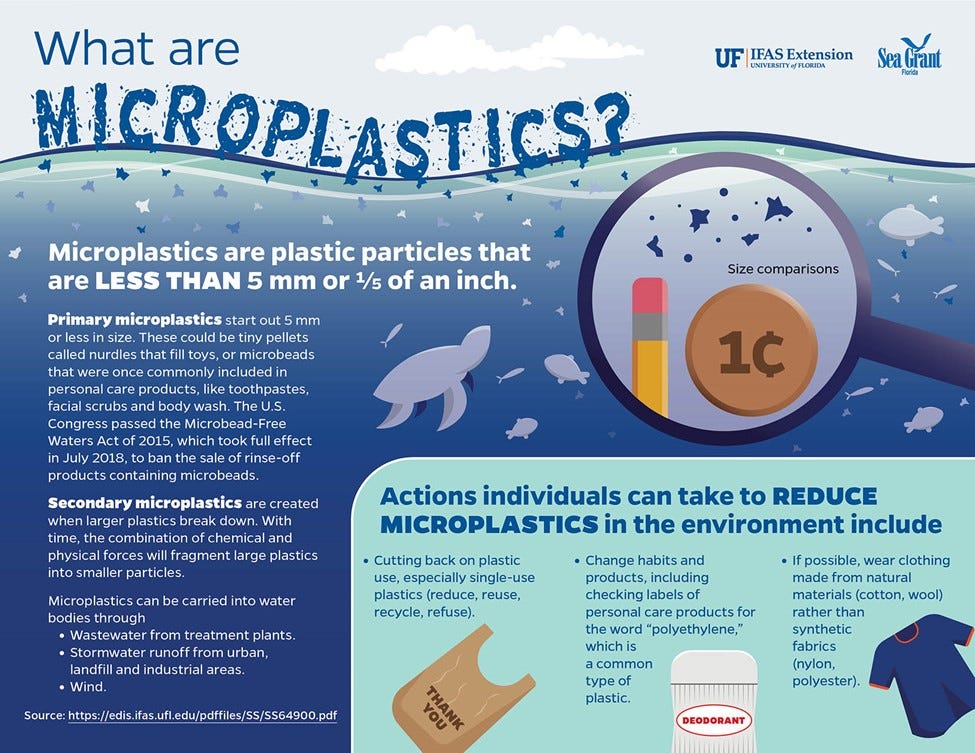




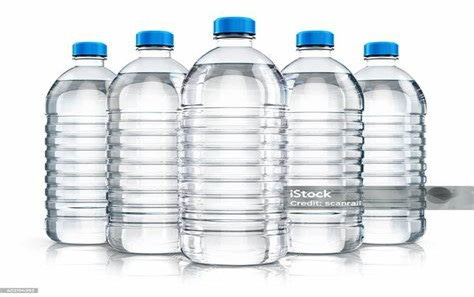

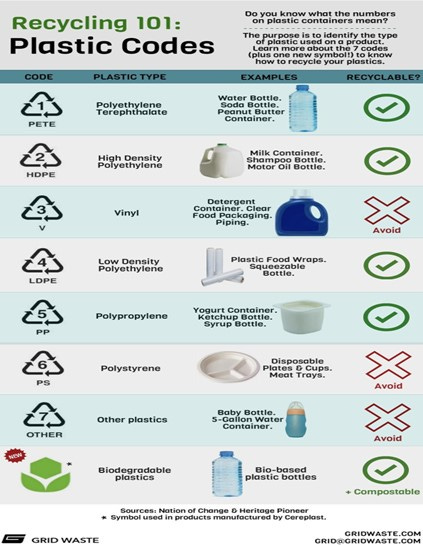
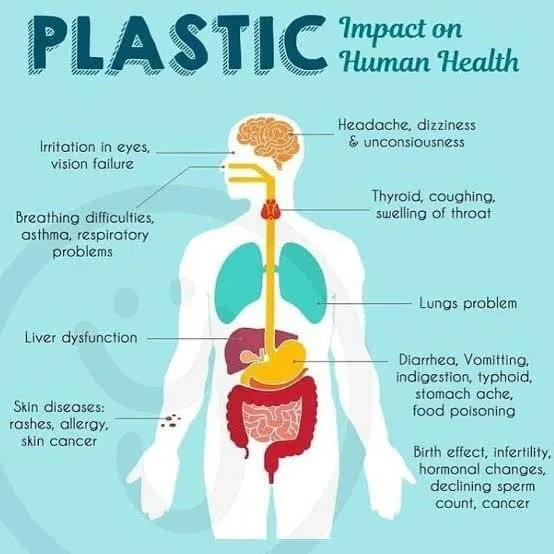




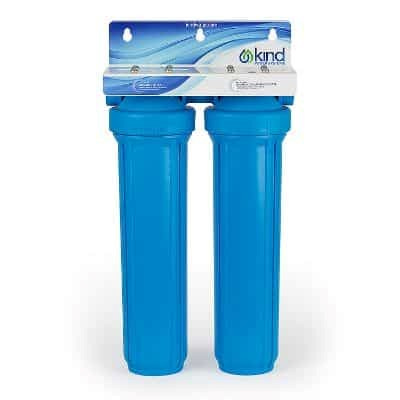

Jon,
I know, it blew my mind when I took a deep dive into it, I couldn't believe how horrible it might become for us all. As I entitled the article, nobody saw this coming. I was aware of forever chemicals and endocrine disruptors, but not the plastic itself being ingested in any meaningful amount. I think when the public becomes aware of this, it is going to be huge. Thanks again for your kind words. Doc
Wow. What an eye opening article. Thanks once again Dr. L.